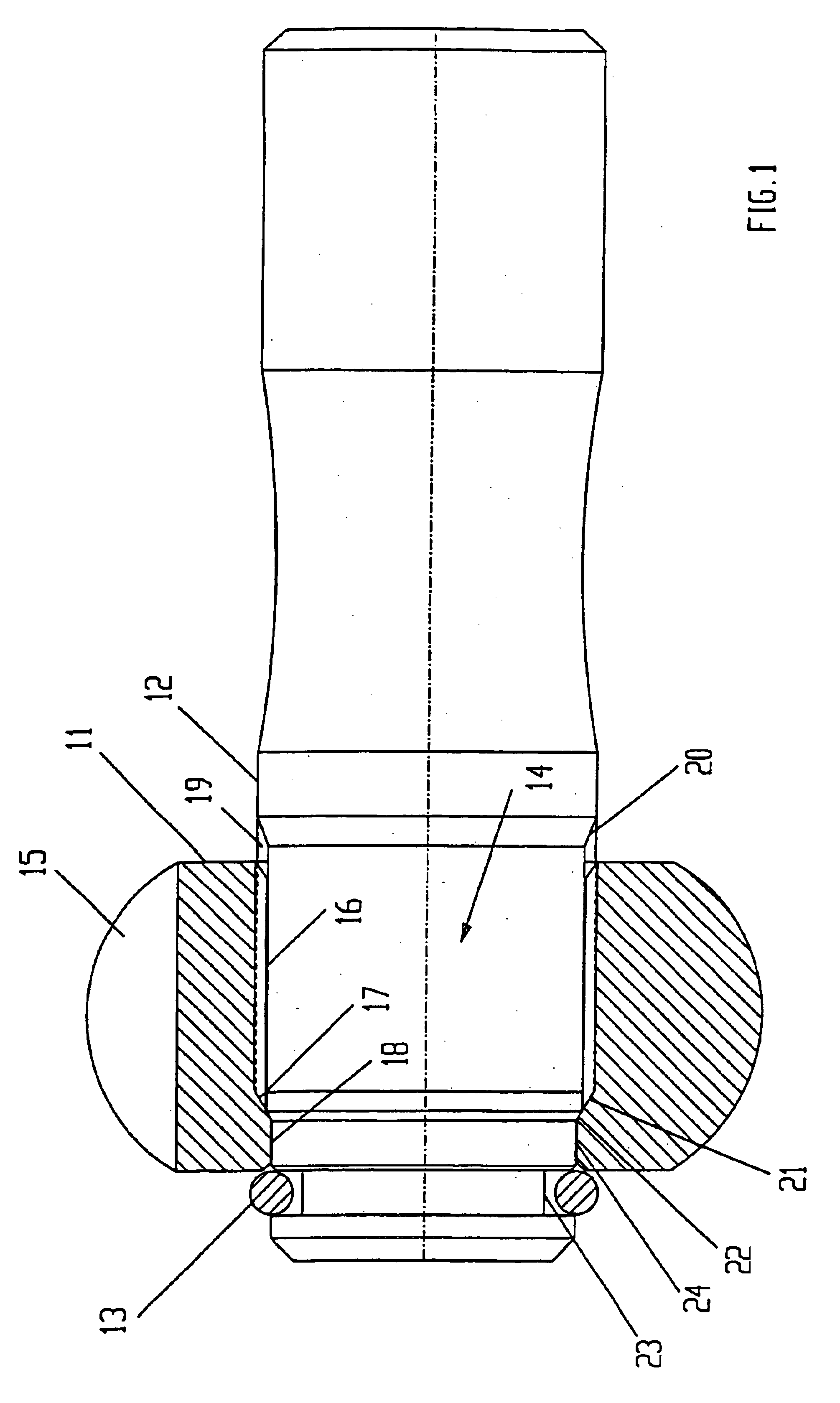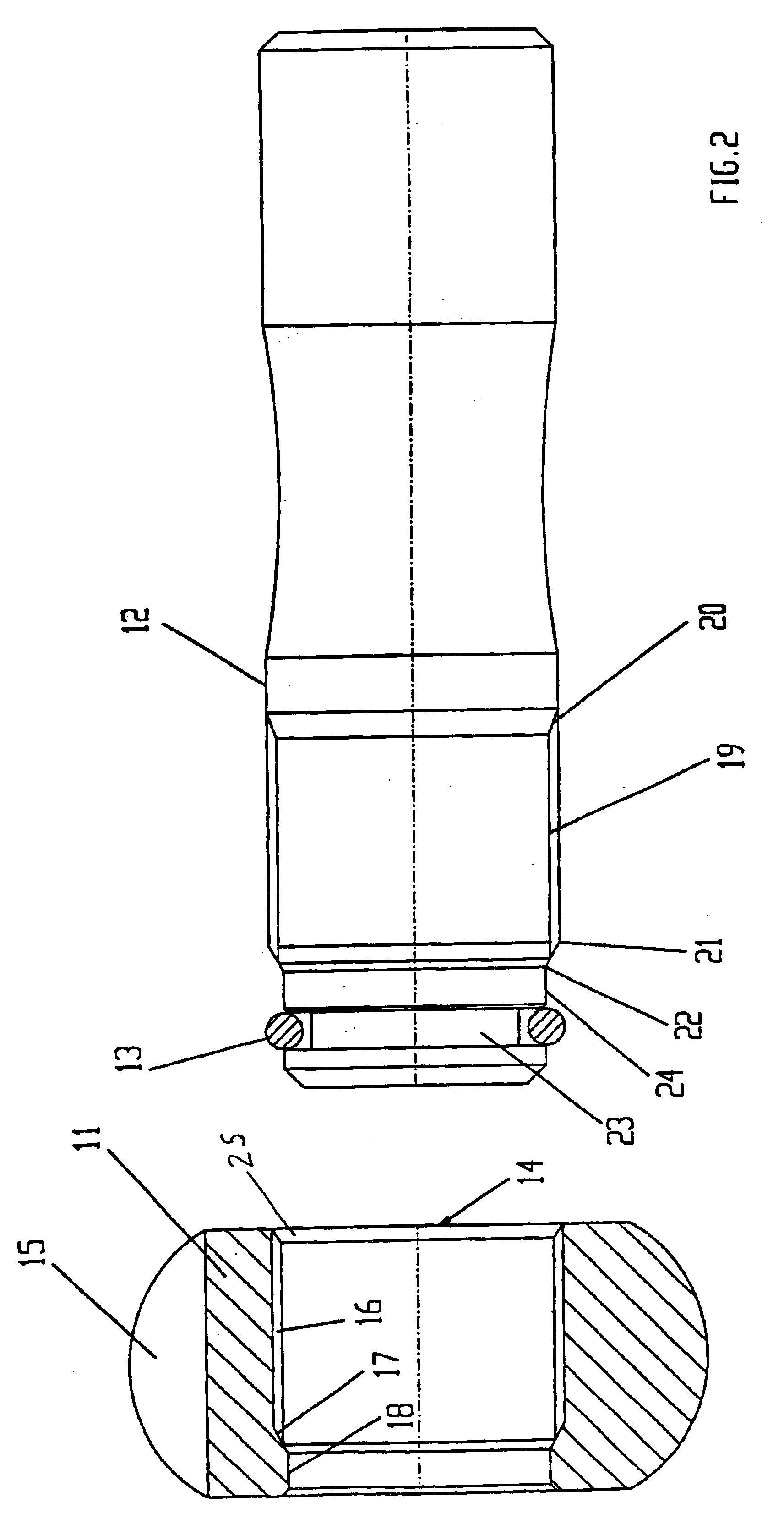Hub member and shaft journal assembly and method
a technology of hub member and shaft, which is applied in the direction of shafts, couplings, forging hammers, etc., can solve the problems of disadvantageous influence of deformation processes on the dimensional accuracy of the respective other surfaces to be deformed, and achieve the effect of reducing the amount of energy and increasing the degree of accuracy
- Summary
- Abstract
- Description
- Claims
- Application Information
AI Technical Summary
Benefits of technology
Problems solved by technology
Method used
Image
Examples
Embodiment Construction
FIG. 1 shows an assembly including an inner joint part 11, a shaft journal 12 and a securing ring 13 in which the below-mentioned individual characteristics can be identified. The inner joint part 11 comprises a through-aperture 14 and ball grooves 15 for receiving torque transmitting balls. The through-aperture comprises a portion with an inner toothing 16, a run-out 17 of the shaft toothing as a well a smooth bore 18 with a reduced diameter. Into the hub member 11 there is inserted the shaft 12 whose shaft toothing 19 complements the inner toothing and whose toothing run-out 20 is positioned at a distance from the inner joint part. A stop cone 22 in front of the toothing start 21 is axially supported on the toothing run-out 17 of the inner toothing 16 of the inner joint part 11 to prevent the shaft journal 12 from being introduced further, which would be possible bearing in mind the toothing length. The stop cone is followed by a cylindrical portion 24 with a reduced diameter whic...
PUM
| Property | Measurement | Unit |
|---|---|---|
| velocity | aaaaa | aaaaa |
| length | aaaaa | aaaaa |
| axial length | aaaaa | aaaaa |
Abstract
Description
Claims
Application Information
 Login to View More
Login to View More - R&D
- Intellectual Property
- Life Sciences
- Materials
- Tech Scout
- Unparalleled Data Quality
- Higher Quality Content
- 60% Fewer Hallucinations
Browse by: Latest US Patents, China's latest patents, Technical Efficacy Thesaurus, Application Domain, Technology Topic, Popular Technical Reports.
© 2025 PatSnap. All rights reserved.Legal|Privacy policy|Modern Slavery Act Transparency Statement|Sitemap|About US| Contact US: help@patsnap.com



